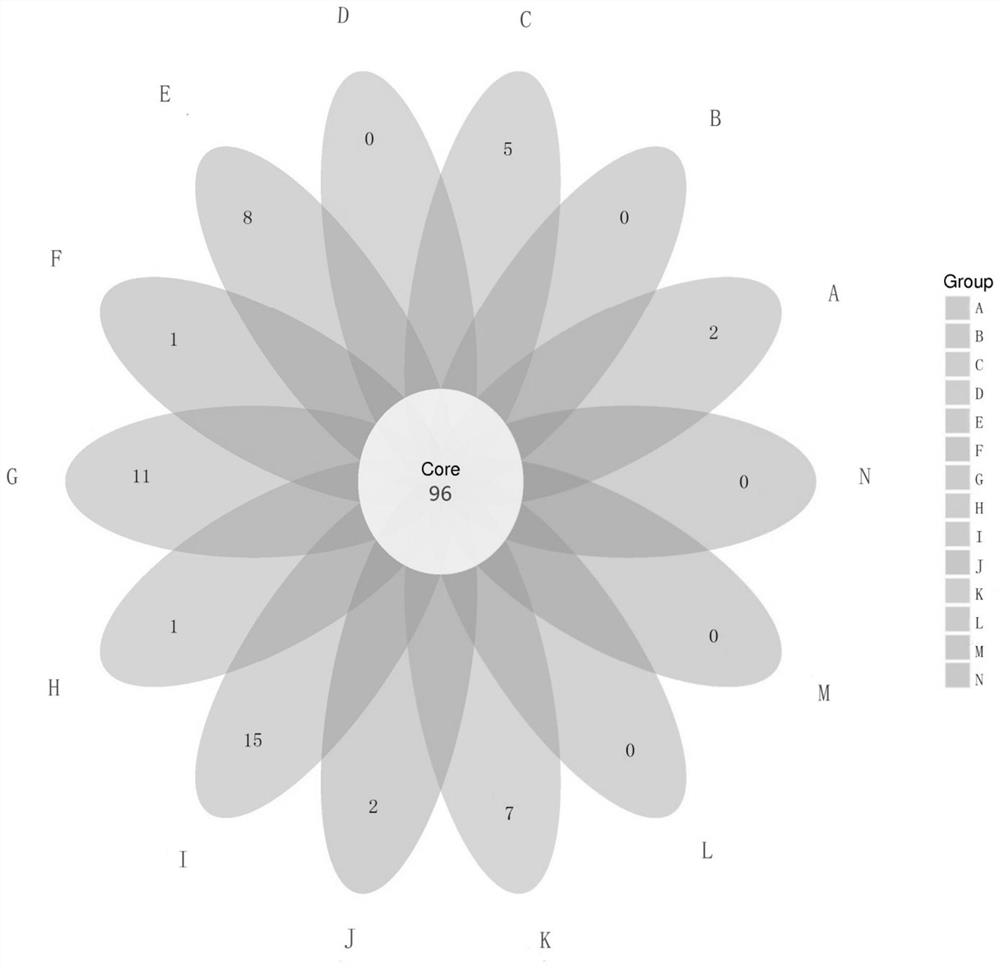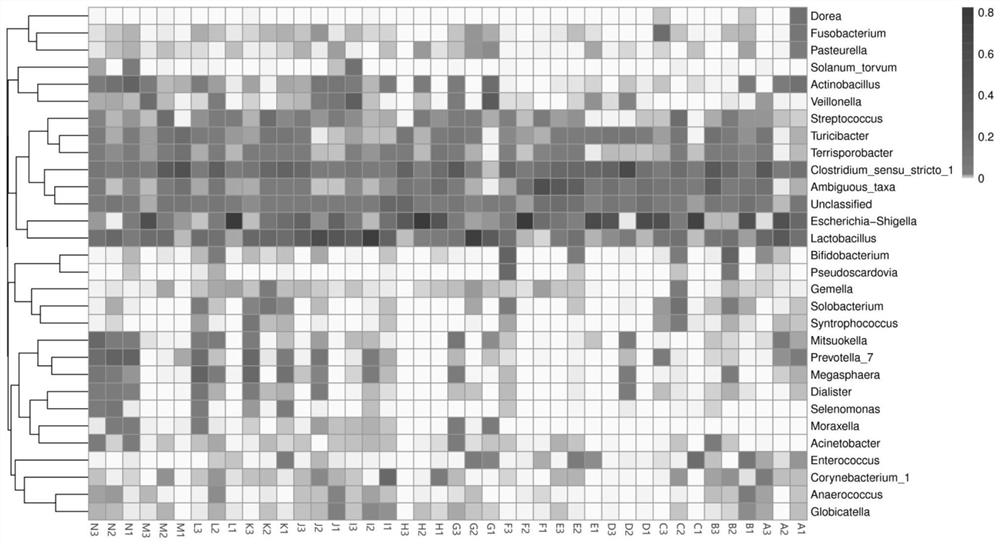Feed for improving diversity of intestinal microorganisms of pigs and application thereof
A diverse and microbial technology, applied in animal feed, animal feed, applications, etc., can solve the problems of drug resistance of pathogenic microorganisms, increase of harmful residues in poultry and livestock products and the environment, and threats to human health
- Summary
- Abstract
- Description
- Claims
- Application Information
AI Technical Summary
Problems solved by technology
Method used
Image
Examples
Embodiment 1
[0026] Test one:
[0027] 1. Experimental design
[0028] 2. Material Preparation
[0029] Experimental location: pig farm of Guangxi Animal Husbandry Research Institute.
[0030] Experimental breed: Guike pig.
[0031] Experimental elephant grass / grass: purple elephant grass, Guiminyin elephant grass, alfalfa, kudzu vine.
[0032] Remarks: The purple elephant grass variety in this example is a variety independently selected and bred by the applicant, and has passed the examination and approval of the Guangxi Zhuang Autonomous Region (or the country) at present.
[0033] This variety is introduced from Brazil, and its breeding method is as follows:
[0034] Carry out sexual propagation of Brazilian purple elephant grass, select plants with high grass yield and good quality for asexual propagation by cuttings, and select plants with high yield per plant, high crude protein content, many tillers, large leaf volume, and stems in the multiplication population. Thick, pest-fre...
Embodiment 2
[0063] Test two:
[0064] 420 30-day-old piglets with similar body weight were selected and randomly divided into 14 groups with 3 levels in each group and 10 piglets in each level. Each level was housed in a single pen of the same size and environment, and carried out according to the routine feeding and management procedures of the pig farm. Free drinking water and food intake, conventional management and breeding, the test period is 90 days.
[0065] Control group: conventional pig feed (ie auxiliary material).
[0066] Treatment group A: 5% fermented purple elephant grass + 95% conventional pig feed (ie auxiliary material).
[0067] The specific treatment method of fermented purple elephant grass is as follows: wash the purple elephant grass and then crush it to a length of 2-3cm. Then, it will be processed by a high-pressure roller machine, and then the treated forage will be quickly put Put it into the ice cellar, add fructo-oligosaccharide and citric acid, stir, stor...
Embodiment 3
[0107] Fermentation of purple elephant grass:
[0108] Experiment 1: The specific treatment method of fermented purple elephant grass is as follows: wash the purple elephant grass and then crush it to a length of 2-3 cm. Then, it will be processed by a high-pressure roller machine, and then the treated forage will be Quickly put it into the ice cellar, add fructo-oligosaccharide and citric acid, stir, store in ice for 24 hours, take it out, immediately use 120 ℃ high fire to defrost while stirring for 3 minutes, then stop the fire, add EM bacteria to mix and build a heap to ferment for 3.5 days, and finally control The water content of purple elephant grass can be 6%.
[0109] Experiment 2: The specific treatment method of fermented purple elephant grass is as follows: wash the purple elephant grass and then crush it to a length of 2-3 cm. Then, it will be processed by a high-pressure roller machine, and then the treated forage will be Quickly put it into the ice cellar, add ...
PUM
 Login to View More
Login to View More Abstract
Description
Claims
Application Information
 Login to View More
Login to View More - R&D
- Intellectual Property
- Life Sciences
- Materials
- Tech Scout
- Unparalleled Data Quality
- Higher Quality Content
- 60% Fewer Hallucinations
Browse by: Latest US Patents, China's latest patents, Technical Efficacy Thesaurus, Application Domain, Technology Topic, Popular Technical Reports.
© 2025 PatSnap. All rights reserved.Legal|Privacy policy|Modern Slavery Act Transparency Statement|Sitemap|About US| Contact US: help@patsnap.com



